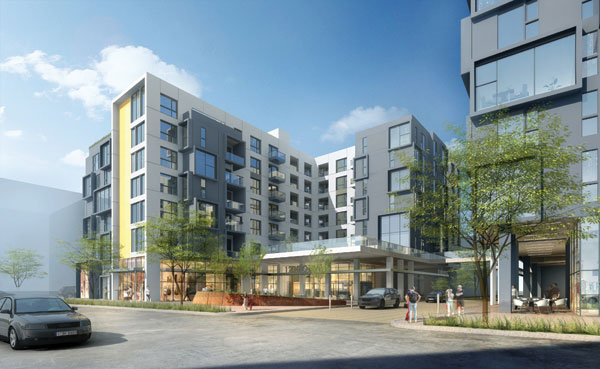Modern Building Codes: Keeping Pace with the Wood Revolution
Learning Objectives:
- Discuss provisions in the International Building Code (IBC) intended to ensure that wood buildings provide the same level of fire performance as other building types.
- Evaluate techniques that allow designers to safely increase the allowable heights and areas of building projects beyond the base limits stated in the IBC.
- Identify the advantages of wood-frame structures in seismic and high-wind events.
- Explain how advances in wood products and building systems are influencing the evolution of building codes.
Credits:
There is a quiet revolution taking place within the design community. After a long emphasis on concrete and steel for buildings other than homes, design professionals are using wood to great effect in a growing number of non-residential and multi-family building types—in applications that range from traditional to innovative, even iconic. Some are driven by wood's cost effectiveness,1 while others cite its versatility or low carbon footprint,2 but their collective path has been made possible by building codes that increasingly recognize wood's structural and performance capabilities, and the continued evolution of wood building systems and techniques.
When the International Building Code (IBC) was introduced in 2000, it consolidated three regional model building codes into one uniform code that has since been adopted by most jurisdictions. It increased the possibilities for wood construction by (among other things) recognizing additional fire protection techniques, consolidating the maximum allowable areas and heights from the three legacy codes into one (thus increasing what's allowable in some jurisdictions), and allowing the use of wood in a wider range of building types. In subsequent versions of the IBC, even more opportunities have been created where additional fire protection features are used. Even so, the pioneering nature of building design is such that there are always architects and engineers seeking to push beyond the conventional, and it is common for project teams to request (and be granted) variances for designs not covered by the code that nonetheless meet its intent. (See sidebar, Designing with Alternate Materials, on page 8.) Given the code's three-year amendment cycle, this is necessary to keep pace with advancements in building systems, materials and construction practices.

Image: Togawa Smith Martin, Inc.
South Park
Los Angeles, California
Architect: Togawa Smith Martin, Inc.
Engineer: Englekirk









